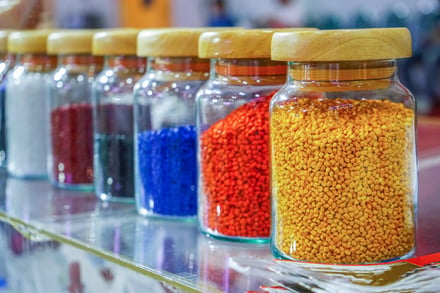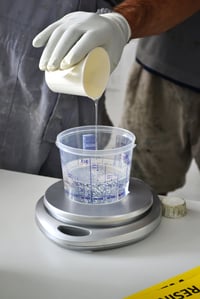
Despite their similar-sounding names, thermosets and thermoplastics are very different materials. They share the prefix “thermo” because they’re both affected by heat. But that’s where the similarities stop. The two materials feature distinct properties, benefits, and applications, making them well-suited for a differing scope of industries. To understand what makes these materials so different, we need to look closer at why they have a “thermo” prefix.
Differences and diversity
Thermosets and thermoplastics are akin to popcorn and chocolate — or at least, this is the easiest way to conceptualize their thermoactivated properties. When heated, popcorn pops, and when it does, there’s no putting it back in the seed. Chocolate, however, can be melted and reformed over and over again. Heat affects both, but very differently.
Aside from the molding process, the physical properties of thermosets and thermoplastics also differ greatly. Thermosets tend to be strong and stable, as well as highly resistant to chemical reactions. Thermoplastics are more malleable, yet they offer high impact strength and attractive surface finishes. The downsides? Thermosets aren’t recyclable; thermoplastics are hard to prototype.
Both materials do deliver a range of customization options, though. In fact, the materials they’re made of play a key role in determining how and where they’re used. Thermosets include polyurethanes, vulcanized rubber, epoxy resins, and more; thermoplastics include nylon, polyethylene, and polypropylene, among others.
Where and how they’re used
The differences inherent to thermosets and thermoplastics make them uniquely suited for differing applications.
 Appliance fabrication may require a thermoset such as epoxy — the material’s high-impact resistance, microbial resistance, and general inert properties are ideal in the kitchen and cooling environment. Conversely, a thermoplastic such as polyethylene makes a great packaging film, since the material shrinks and conforms to the packaging when heated.
Appliance fabrication may require a thermoset such as epoxy — the material’s high-impact resistance, microbial resistance, and general inert properties are ideal in the kitchen and cooling environment. Conversely, a thermoplastic such as polyethylene makes a great packaging film, since the material shrinks and conforms to the packaging when heated.
As a general rule, thermosets are often affiliated with manufacturing and utilities — appliances, electrical applications, and anything else involving heat that may otherwise warp thermoplastics. Thermoplastics, on the other hand, are broadly diverse and used in everything from aerospace fabrication to consumer goods and toys. The nature of the polymer used depends on the final application.
Customizing and utilizing polymers
While some thermoset and thermoplastic polymers already have the inherent characteristics needed for a job, customization is still very much an option. For example, an electrical components manufacturer may already use a UL-listed thermoset — but now it needs to add dimensional stability and anti-corrosion properties.
Using the base thermoset, companies such as Mar-Bal can custom formulate polymers that instill these properties into the final thermoset material. This compounding process greatly expands the number of thermosets (and thermoplastics) applicable for similar applications across industries. In some cases, these proprietary compounds are the secret to a product’s market success!
Because thermosets and thermoplastics have so many distinct uses, these polymers remain the gold standard for molded products.
If you have a plastics application that you need help with, consult with the experts at Mar-Bal. We engineer materials to fit your job and meet your exact specifications, specializing in injection, compression, and transfer molding. Contact us today through our website.

